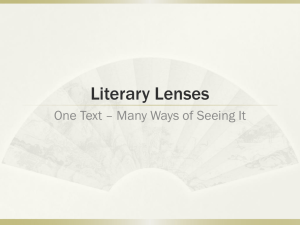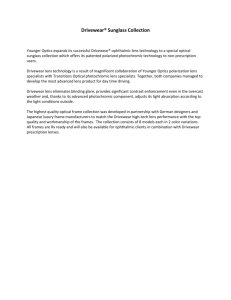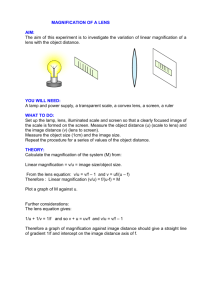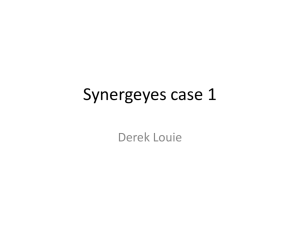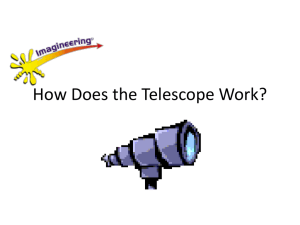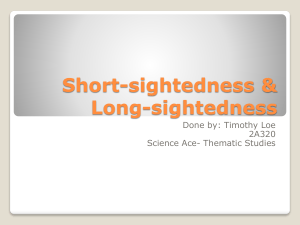What is Critical Lens Theory?
advertisement
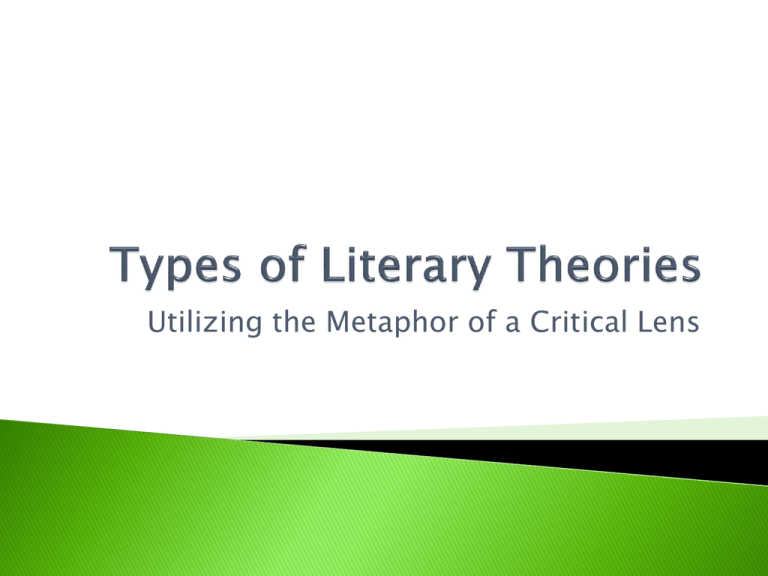
Utilizing the Metaphor of a Critical Lens Reader Response Talking to the Text Read Aloud A theory provides an angle or perspective you will take when you look at a text. Each lens is a view point or opinion. It doesn’t mean that the theories’ perspectives will necessarily disagree. This is the relationship between the text and the reader. The reader must find meaning in the literature itself. ◦ Who is the piece written for and why? ◦ What interpretations are created? Because we don’t read in a vacuum, we are creating an argument based on what we knownot just on text. Basically, this is what you [the readers] think. Reel When we Talk to the Text, we will exam a picture, text, paper, or experience to explore how our internal thoughts and feelings individually. We will record these ideas on the text itself, post-it notes, or our journals. We will consider our terminology, author’s purpose, background knowledge, questions, ideas, emotions, and vocabulary when analyzing the text. By doing so, we will have a record on the text itself our initial reaction and continuing consideration of the text as we consider it for ourselves. Birds Candy Cigarette Read “A&P” on page 833 through a Reader Response Lens utilizing Talking to the Text. Background: the story came to Updike when he was driving past the store and saw girls who looked “surprisingly naked.” What do you think about the story? Feminist Lens Marxist Lens Structural/Archetypal Lens Psychoanalytic Lens This perspective takes into account the feelings and actions associated with the male and female characteristics in a work of literature. “No written law has ever been more binding than unwritten custom supported by popular opinion.” –Carrie Chapman Catt Reinforce or undermine economic, political, social, and psychological oppression of women. Men = thought, aggression, assertion, rationalism Women = feeling, passivity, non-rationalism, (all which keep them from holding positions of power) 1. 2. 3. 4. 5. 6. 7. How is the relationship of men/women portrayed? What is power relationship between men and women? How are gender roles defined? What constitutes masculinity v femininity (economically, politically, socially, or psychologically)? Do characters take on traits of the opposite gender? What does the work imply about the possibility of sisterhood forming to resist patriarchy? What does the work say about women's’ creativity? Karl Marx thought the world consisted of a series of class struggles: oppressor v oppressed. Literature expresses class struggle and materialism where a quest for wealth often defines a character. “Workers of the world unite; you have nothing to lose but your chains.” –Karl Marx 1. 2. 3. What role does class play in the story? How does a character overcome oppression? In what way is the work propaganda for status quo? Or does it undermine status quo? 4. 5. Status quo: Keeping things the way they currently are Are social conflicts ignored or blamed? Does the literature propose a Utopian (perfected) vision to the current society? The text is shaped by myths of the cultural recurring images, symbols, patterns, and motifs. ◦ Characters like the witch, the scapegoat, the hero, or the wise old man ◦ Situations like birth, death, rebirth, or sacrifice ◦ Settings like forests, water, or caves All of these things make us think a certain way to predict the text. “You can’t look at a text as if it were in a vacuumeveryone recognizes story patterns and symbols in text.” – Karl Jung 1. 2. 3. 4. 5. 6. 7. How do characters in text mirror archetypal figures? Does it mirror literary patterns? Is the protagonist a hero? Does the hero embark on a journey? Is there a journey to the underworld or land of the dead? What trials does the narrator face? What is the reward for overcoming them? This lens is based on Freudian Theories of psychology. People’s behaviors are based on the unconscious, and they are driven by desire, fear, need, and conflict. ◦ Mostly from childhood events ◦ Children need parents and from the relationship with or without them, children are developed. ID: Location of drives (libido) EGO: Defense against power of drive SUPEREGO: Houses judgment of self and others (unconscious) 1. 2. 3. 4. 5. How does the idea of repression inform the work? Are there family dynamics at work here? How is the character’s behavior in line with ID, EGO, and SUPEREGO? What does the work say about the author? What does your interpretation say about you as a reader? Homework: Read Charlotte Perkins The Yellow Wall Paper on page 1149 utilizing one of the four lenses discussed in Part 2 (Feminist, Marxist, Archetypal, or Psychoanalytic) and Talking to the Text.



